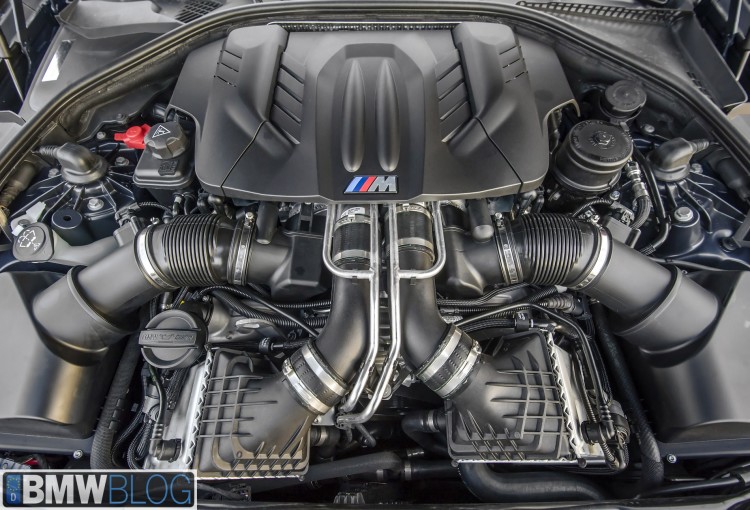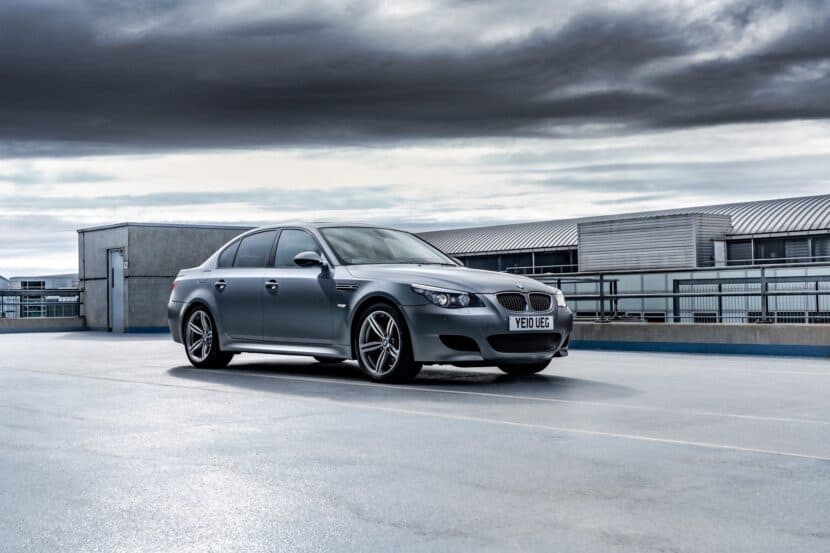The new F90-generation BMW M5 looks very good, as we recently learned today. It’s dynamic, sleek and luxurious. What’s surprising is that it seems to be getting pretty positive feedback. If there was one criticism, though, it’d be with its evolutionary design. Compared to the F10-gen M5 that preceded it, this new car doesn’t look that much different. However, underneath the skin, they’re completely different cars. So much so, they could wear different nameplates. So since we already talked about how different each car looks, we figured we’d talk about how different each car is, mechanically.
On the outside, while they may look similar, the F90 M5 is bigger in almost every dimension. It isn’t drastically larger, but larger nevertheless. In terms of length, the new F90 BMW M5 is 195.47 inches long, compared to the 193.31 inches if the F10. While it’s almost two inches longer, the new F90 M5 isn’t much wider, measuring 74.92″ compared to 74.45″. It’s barely any taller, also, at 57.99″ rather than 57.32″.

More important are the F90 BMW M5’s wheelbase and wheeltrack, compared with the old car. The new F90 measures at 117.4″ to the F10’s 116.69″. So its wheelbase is a bit longer now, which will help with stability, even if only by a bit. What’s interesting, though, is that, despite its more aggressive fender flares, the new M5’s wheel track about the same as the F10’s. For the F90, its front wheeltrack is 64.02″ versus the F10’s 64.06″. So it’s actually a hair narrower. At the rear, it’s 62.8″/62.28″, F90/F10.
But that’s not what fans want to read about, how much longer the new M5 is. You fellow enthusiasts want to know about power and performance. Well, the F90 M5 has a lot of both. Under the hood of the new BMW M5 lies a newly revised variant of the brand’s 4.4 liter twin-turbocharged V8 that makes 600 hp on the nose and 553 lb-ft of torque. Compare that to the F10 M5, which has an older variant of the 4.4 liter V8, 575 hp and 500 lb-ft of torque (in Competition Package spec). So the new car is significantly more powerful. While the old F10 M5 used BMW’s seven-speed dual-clutch gearbox, the new F90 M5 uses an eight-speed ZF automatic. While that isn’t as sexy or high-tech, it will probably actually work better in practice. Shifts will be 80-90 percent as fast but far smoother and easy to modulate.

The new BMW M5 also uses a trick all-wheel drive system that can turn off its front axle whenever desired, whereas the old BMW M5 was rear-wheel drive only. While the old M5 handled well and was very good at making big skids, it wasn’t the sharpest tool on the road. This new BMW M5 figures to be a better driver’s car, despite being all-wheel drive. Also, its four-wheel grip allows it to be much, much faster.
In the old M5 Competition Package, a 0-60 mph run of 3.9 seconds was the fastest we’ve ever seen recorded. This new one, BMW claims, can do the same sprint in 3.2 seconds. That’s far quicker and we think it might even be quicker still. BMW has a history of seriously underrating its power and performance figures. So it’s not out of the realm of possibility to see the new M5 hit 3 seconds flat. Which would be insane.


While the new BMW M5 might not look drastically different from the old car, it absolutely is. It’s different in size and shape as well as being completely different under the skin. The new F90 M5 is on a completely new chassis, new engine, transmission and powertrain. It’s also far faster and more dynamic.





































































